Top 10 most industrious animals
 Bashny.Net
Bashny.Net
Do you know what animals are the most hardworking?
© here
12 photos
10 Location: Fish called Copello is the only fish in the world that puts the offspring not in the water. Female and male jumping from the water on the leaves located above the water, and using fins as the suckers clinging to her. Thus, Copello should be postponed for at least 50 eggs in the wild reaches 200.

And that is not dried eggs, the male has to keep them moist. With the tail leaves it sprays water, 1 time per minute for 4 days. By the time the eggs are ripe, the male makes the 6000 movement of the tail.

9 place occupied by penguins.
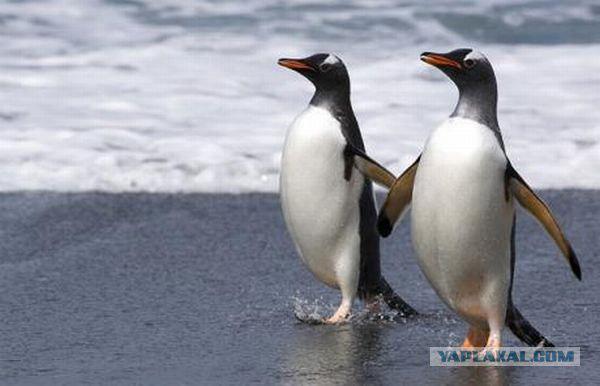
It is the only bird that has been breeding in the middle of winter in the Antarctic. For the most severe winter, the male penguins must hatch their eggs on the tips of the toes. If the egg is left on the ice, it freezes over in just two minutes.
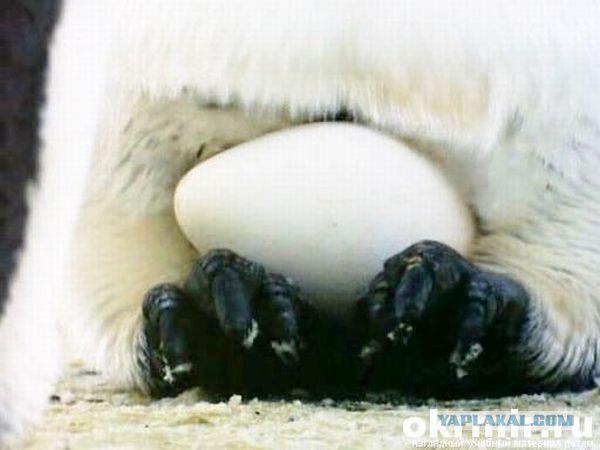
8 place is a bird called the bowerbird. 6 Months male spends building his nest. Bowerbird socket located on the ground and consists mainly of dry grass.
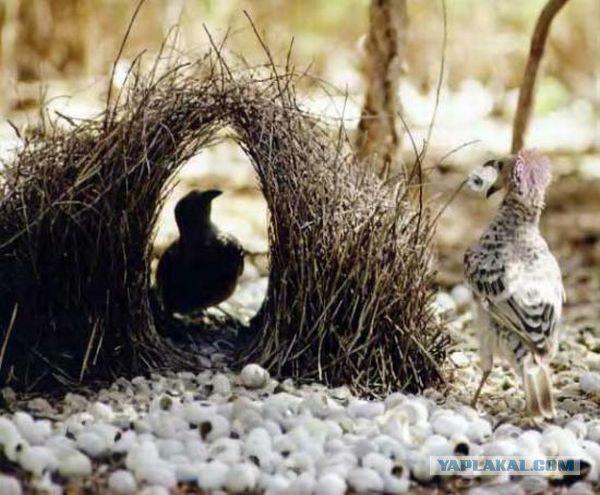
7th place: Africa takes a hyena. These animals are constantly in motion, and rarely spend more than a day in one place. On the hunt, they pursue the victim, in turn, one after another. They rely on stamina, for about an hour, they can travel at twice the speed of a sprinter.
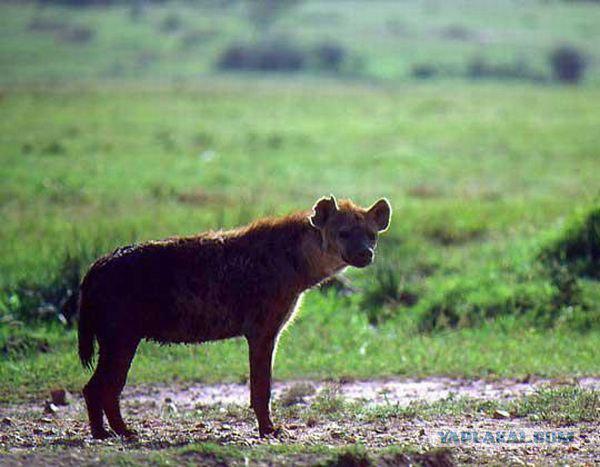
6 Location: takes a lioness. Unlike hyenas hunt only female, which is to feed the cubs about 15 times per day. This means that the lion should hunt around the clock. Therefore, in order to somehow reduce the load of a lioness hunt together. If something happens to one another female adopts her cubs, and it increases the amount of work.
But lions males can sleep the whole day to fly, so only the 6th place!

5 Location: takes the largest rodent American beaver. In an average year the beaver saps 216 trees. One family could erode about one ton per year. Beavers workaholics, because even after they put the last twig, they work 24 hours, doing minor repairs.
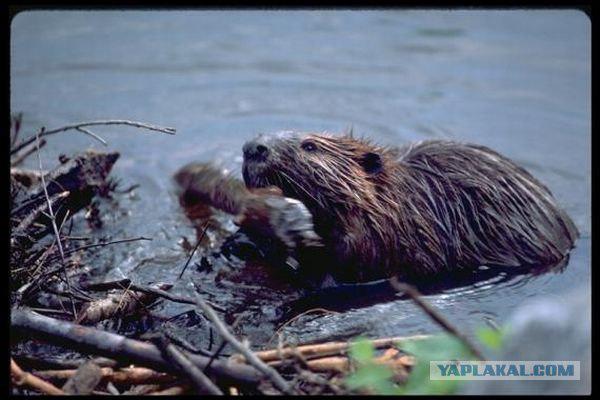
4 Location: take a bird called Megapod. They work to create a nest with heating. The fact that the rotting underground plants emit heat. Therefore megapod buries eggs ground. As a result, these birds can make a mound with a diameter of about 15 meters in diameter and weighing up to 50 tons.
Females megapoda weigh up to 2 kilograms, but it lays eggs, which weigh 250 grams every 4-8 days, and so within six months.
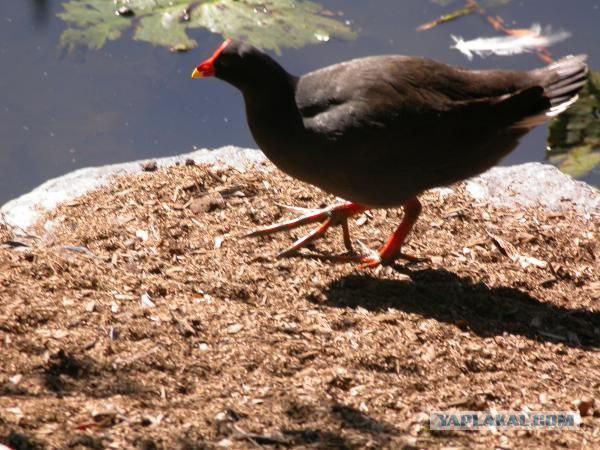
3 Location: it takes the hardest working cleaner. His place of work in tropical reefs. And the name of this fish Guba-cleaner. He cleans parasites from the gills scales, and even mouths. In one day, the wrasse can eat more than 1,000 parasites. This continues every daylight hours.

2 Location: occupy leaf-cutting ants. The colony is divided into 4 groups. The largest are called Blankers, they cut the leaves and carry them to the nest. They are so effective that they can strip the tree overnight. But ants do not eat the leaves, their digestive system is unable to process them.
The following smaller ants, their work is to start the process of turning leaves into food. They chew leaves and spit them, mixing them with saliva and feces. These coils are then collected ants gardeners. These ants even smaller. On chew the leaves grow the fungus, it is to care for it gardeners, and it was he who serves them food. The last group of cleaners. These are the little ants harvest their task, and distributed among the entire colony. They work 24 hours a day, but in shifts.
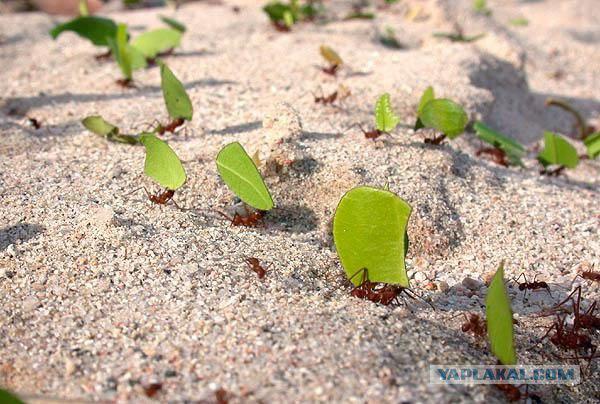
1 Location: on the right is Bee. The uterus should be delayed for a minute egg. This may mean that she lays up to 200 thousand. Per year. When a bee is born, she tidies cell. Then, a few days later, the glands on her belly start to allocate the wax, which it uses for the building and repair of cells. Later, the bees are allowed to guard the hive and produce honey. Three week-long bee can fly to extract honey and nectar.
The uterus can work up to 5 years, but the worker bees have to do everything in just 35 days, after which they die. To make just half a kilogram of honey bees have to pollinate up to 2 million colors. During this time, they make up to 10 million flights in the hive and fly a distance of 90 thousand kilometers, it is like to fly around the world twice. Bees work for 24 hours without a break, which is why when it comes to a workaholic, a bee has no equal.
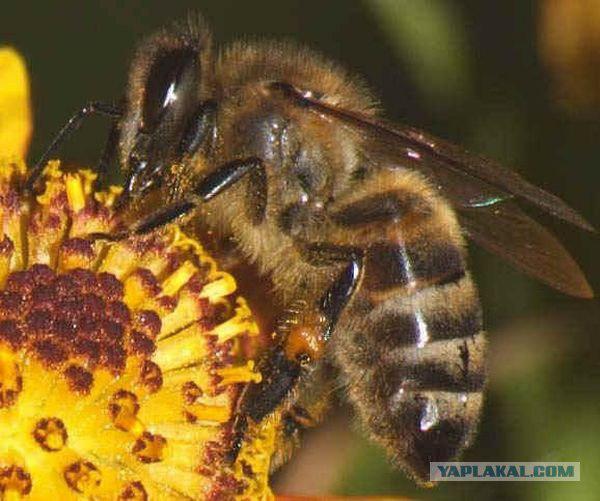
Source:
© here
12 photos
10 Location: Fish called Copello is the only fish in the world that puts the offspring not in the water. Female and male jumping from the water on the leaves located above the water, and using fins as the suckers clinging to her. Thus, Copello should be postponed for at least 50 eggs in the wild reaches 200.

And that is not dried eggs, the male has to keep them moist. With the tail leaves it sprays water, 1 time per minute for 4 days. By the time the eggs are ripe, the male makes the 6000 movement of the tail.

9 place occupied by penguins.

It is the only bird that has been breeding in the middle of winter in the Antarctic. For the most severe winter, the male penguins must hatch their eggs on the tips of the toes. If the egg is left on the ice, it freezes over in just two minutes.

8 place is a bird called the bowerbird. 6 Months male spends building his nest. Bowerbird socket located on the ground and consists mainly of dry grass.

7th place: Africa takes a hyena. These animals are constantly in motion, and rarely spend more than a day in one place. On the hunt, they pursue the victim, in turn, one after another. They rely on stamina, for about an hour, they can travel at twice the speed of a sprinter.

6 Location: takes a lioness. Unlike hyenas hunt only female, which is to feed the cubs about 15 times per day. This means that the lion should hunt around the clock. Therefore, in order to somehow reduce the load of a lioness hunt together. If something happens to one another female adopts her cubs, and it increases the amount of work.
But lions males can sleep the whole day to fly, so only the 6th place!

5 Location: takes the largest rodent American beaver. In an average year the beaver saps 216 trees. One family could erode about one ton per year. Beavers workaholics, because even after they put the last twig, they work 24 hours, doing minor repairs.

4 Location: take a bird called Megapod. They work to create a nest with heating. The fact that the rotting underground plants emit heat. Therefore megapod buries eggs ground. As a result, these birds can make a mound with a diameter of about 15 meters in diameter and weighing up to 50 tons.
Females megapoda weigh up to 2 kilograms, but it lays eggs, which weigh 250 grams every 4-8 days, and so within six months.

3 Location: it takes the hardest working cleaner. His place of work in tropical reefs. And the name of this fish Guba-cleaner. He cleans parasites from the gills scales, and even mouths. In one day, the wrasse can eat more than 1,000 parasites. This continues every daylight hours.

2 Location: occupy leaf-cutting ants. The colony is divided into 4 groups. The largest are called Blankers, they cut the leaves and carry them to the nest. They are so effective that they can strip the tree overnight. But ants do not eat the leaves, their digestive system is unable to process them.
The following smaller ants, their work is to start the process of turning leaves into food. They chew leaves and spit them, mixing them with saliva and feces. These coils are then collected ants gardeners. These ants even smaller. On chew the leaves grow the fungus, it is to care for it gardeners, and it was he who serves them food. The last group of cleaners. These are the little ants harvest their task, and distributed among the entire colony. They work 24 hours a day, but in shifts.

1 Location: on the right is Bee. The uterus should be delayed for a minute egg. This may mean that she lays up to 200 thousand. Per year. When a bee is born, she tidies cell. Then, a few days later, the glands on her belly start to allocate the wax, which it uses for the building and repair of cells. Later, the bees are allowed to guard the hive and produce honey. Three week-long bee can fly to extract honey and nectar.
The uterus can work up to 5 years, but the worker bees have to do everything in just 35 days, after which they die. To make just half a kilogram of honey bees have to pollinate up to 2 million colors. During this time, they make up to 10 million flights in the hive and fly a distance of 90 thousand kilometers, it is like to fly around the world twice. Bees work for 24 hours without a break, which is why when it comes to a workaholic, a bee has no equal.

Source:
Tags
See also
20 most unusual animals found in the last 20 years
Spider-goats, reptiles, crickets and 7 more of the strangest animals that are grown on farms
The smallest animals on the planet
10 most famous animal artists
20 of the most unusual animals according to PBO
Top 10 most bizarre photos
30 happiest animals that always cheer up
5 most intelligent animals on the planet after man
In the "Guinness Book of Records" is no longer records the thickest animals

















